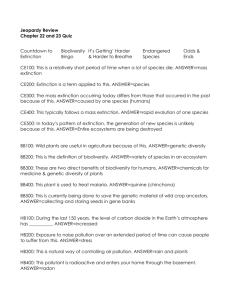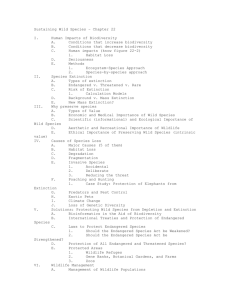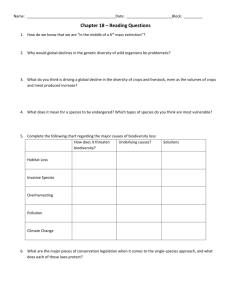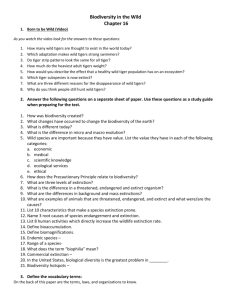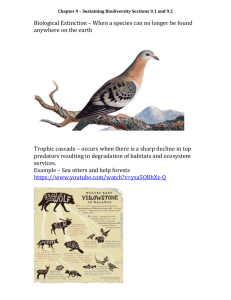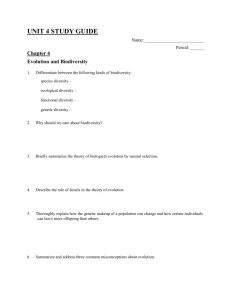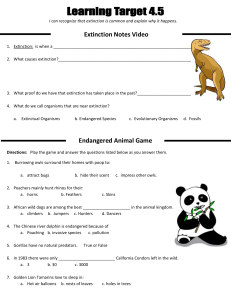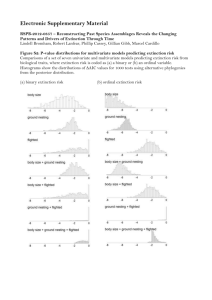CH. 8 Study Guide
advertisement
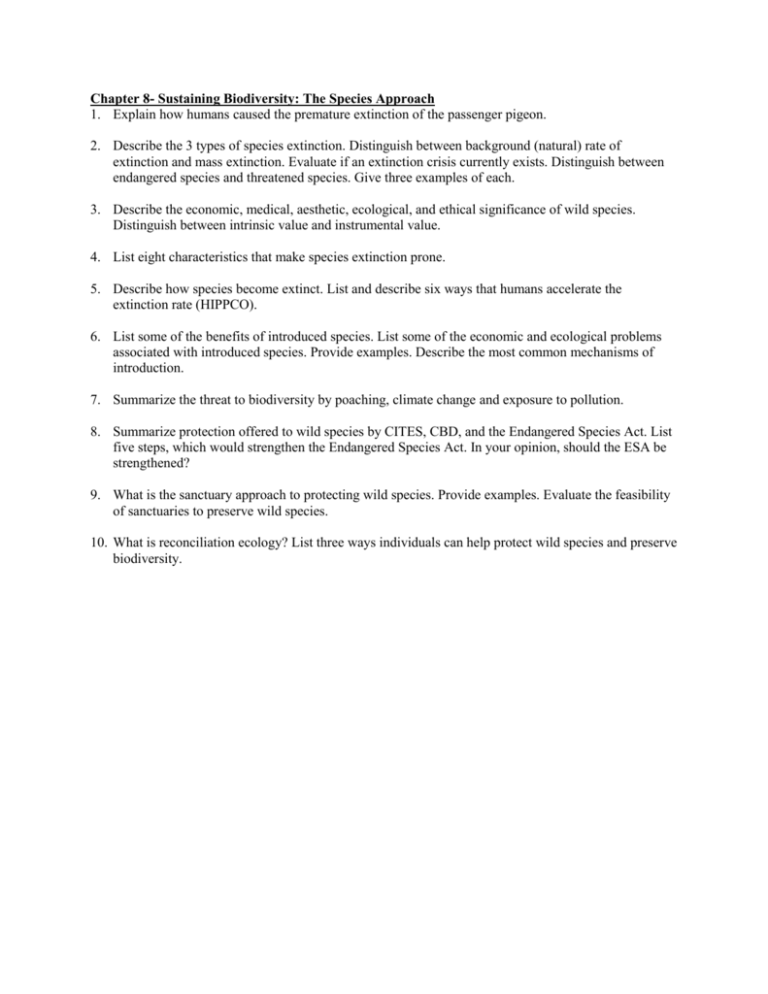
Chapter 8- Sustaining Biodiversity: The Species Approach 1. Explain how humans caused the premature extinction of the passenger pigeon. 2. Describe the 3 types of species extinction. Distinguish between background (natural) rate of extinction and mass extinction. Evaluate if an extinction crisis currently exists. Distinguish between endangered species and threatened species. Give three examples of each. 3. Describe the economic, medical, aesthetic, ecological, and ethical significance of wild species. Distinguish between intrinsic value and instrumental value. 4. List eight characteristics that make species extinction prone. 5. Describe how species become extinct. List and describe six ways that humans accelerate the extinction rate (HIPPCO). 6. List some of the benefits of introduced species. List some of the economic and ecological problems associated with introduced species. Provide examples. Describe the most common mechanisms of introduction. 7. Summarize the threat to biodiversity by poaching, climate change and exposure to pollution. 8. Summarize protection offered to wild species by CITES, CBD, and the Endangered Species Act. List five steps, which would strengthen the Endangered Species Act. In your opinion, should the ESA be strengthened? 9. What is the sanctuary approach to protecting wild species. Provide examples. Evaluate the feasibility of sanctuaries to preserve wild species. 10. What is reconciliation ecology? List three ways individuals can help protect wild species and preserve biodiversity.


